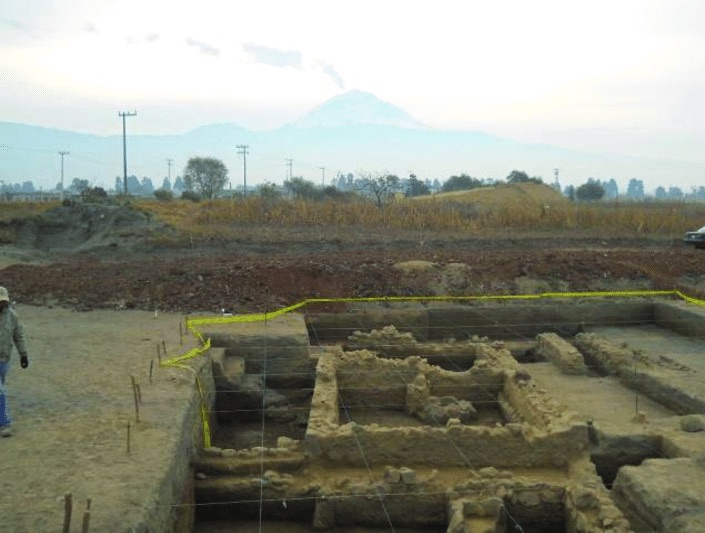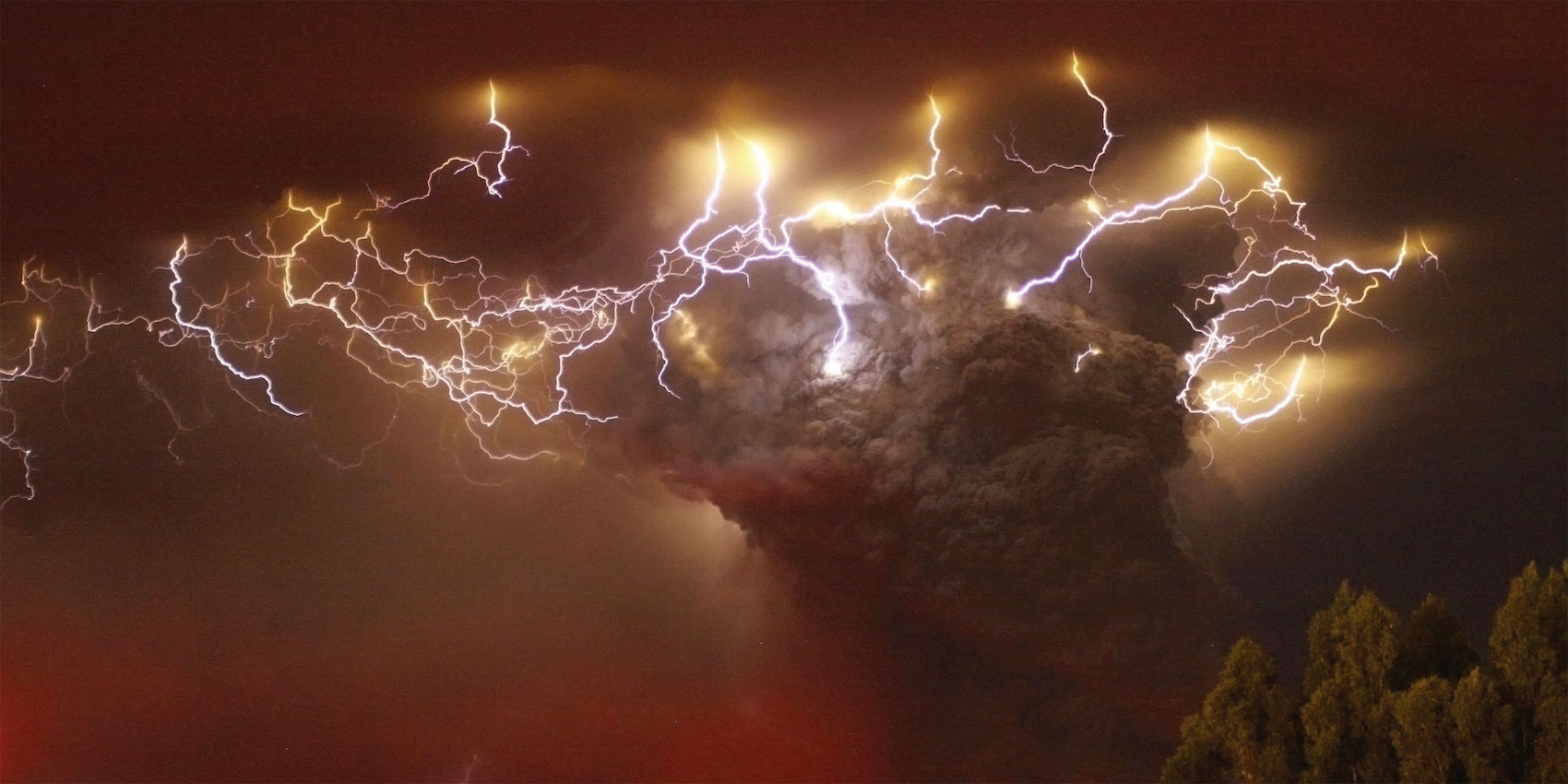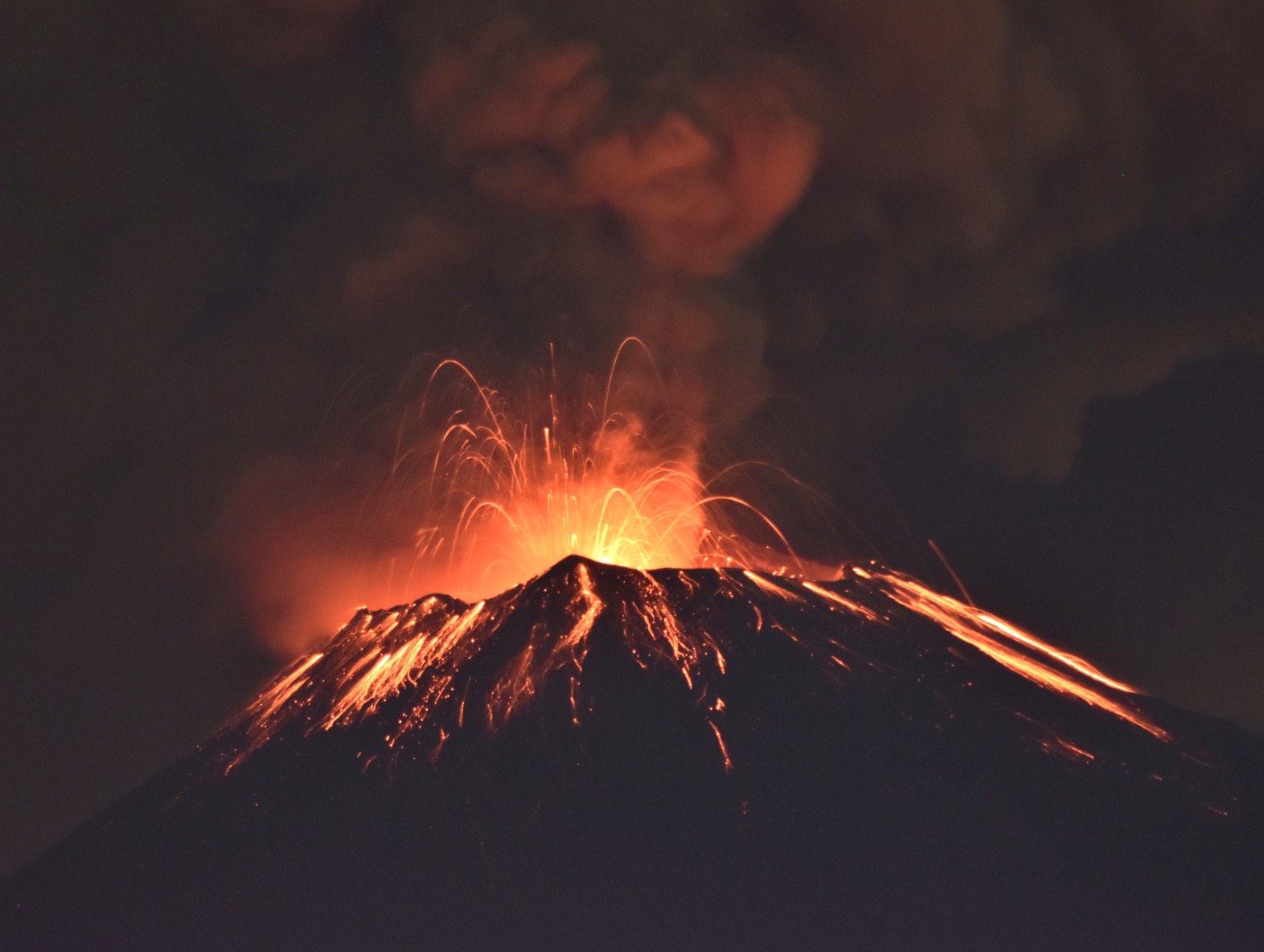Volcanoes
Volcanoes and the Historicity of the Book of Mormon
"Thick Darkness": Volcanoes and the Historicity of the Book of Mormon
(Ted Dee Stoddard, Book of Mormon Archaeological Forum)
A few excerpts from this article:
"...When readers truly understand the nature of massive volcanic eruptions, their evaluation of Joseph Smith in Palmyra, New York, in 1829 will be that the New World crucifixion-of-Christ events recorded in 3 Nephi 8 show, from a historicity perspective, that Joseph Smith translated, not merely authored, the Book of Mormon. The darkness of 3 Nephi 8 was such that the people could feel it. In Noah Webster’s 1828 dictionary, the word darkness at the time Joseph translated the Book of Mormon clearly meant “absence of light.” But Joseph’s wording describing the darkness of 3 Nephi 8 involved more than mere “absence of light.” The terms thick darkness, mists of darkness, and vapor of darkness go beyond “absence of light.” What kind of darkness does Joseph’s translation describe with such terminology?"
"Could Joseph Smith in his wildest imaginations have dreamed up such vivid descriptions of a massive volcanic eruption? Simple reasoning tells me that in Palmyra, New York, in 1829, Joseph had nothing to consult to give him guidance in describing such an event—assuming the eyewitness account in 3 Nephi is a valid one."
Storms. See article.
Thunder. See article.
Lighting. See article.
Whirlwinds.
"The noun whirling is used in several instances with the catastrophic events of AD 34. In verse 12 of 3 Nephi 8, whirlwinds are listed as one contributor to the “great and terrible destruction in the land northward; for behold, the whole face of the land was changed.” In verse 16, some of the people “were carried away in the whirlwind; and whither they went no man knoweth, save they know that they were carried away.”
As Kowallis points out, “Large explosive volcanic eruptions are often accompanied by violent winds and whirlwinds.” He further says: “Whirlwinds, or tornados, appear to be a fairly common feature of many explosive volcanic eruptions. The hot ash erupted into the air is a concentrated source of heat that causes severe updrafts, providing ideal conditions for the formation of whirlwinds. Only a few accounts, however, actually report whirlwinds, perhaps because they often cannot be seen due to the incredible darkness that usually accompanies eruptions.”
Kowallis also says that “Central American volcanoes are so explosive that liquid lava is rarely erupted. Instead, almost all (99 percent) of the magma erupted out of Central American volcanoes is in the form of ash and pumice. This would perhaps explain why there is no mention in the 3 Nephi account of anything that sounds like lava flows.” It also perhaps explains why the 3 Nephi account makes no mention of rain in connection with the whirlwinds and why Joseph Smith used the word whirlwind rather than tornado to describe the destructive forces associated with the massive volcanic eruptions in AD 34.
People living in upstate New York in the nineteenth century probably would have heard about tornadoes. Some of them may even have experienced tornadoes. Once again, however, without an eyewitness account and unique information to guide them, they would not have distinguished between tornadoes and whirlwinds and then correctly associated the concept of whirlwinds with massive volcanic eruptions."
Vapors and Mists. See article.
Destruction of Cities. See article.
Destruction to the Environment. See article.
Summary:
Since its initial publication, millions of readers of the Book of Mormon have stood forth boldly in support of the historicity of the Book of Mormon. That means they believe Joseph Smith translated an ancient record by the gift and power of God. Their belief in the historicity of the Book of Mormon has many facets, including those contained in this article.
The fundamental approach that many, many Book of Mormon readers have followed in connection with Book of Mormon issues has been the following: Questions—yes; doubts—no! In the process, they have taken the stance that questions about the Book of Mormon are legitimate and are always answerable—if not immediately, then at some time in the future.
Such has indeed been the case beginning in 1829 with questions about the darkness in 3 Nephi 8, as reflected in the Book of Mormon literature of the nineteenth and twentieth centuries. The major historicity premise about darkness in the Book of Mormon is the primary point of this article—that 3 Nephi 8 was written as an eyewitness account of the events that occur in connection with massive volcanic eruptions.
Simply put, Joseph Smith was in no position to write this account as an outcome of his personal experiences; and all evidence points to the fact that he did not have access to someone else’s eyewitness account as a basis for the content of 3 Nephi 8. Therefore, Joseph translated Mormon’s account of these catastrophic events; and Mormon wrote his account based on the eyewitness report of Nephi and his associates who lived in Mesoamerica at the time of Christ’s crucifixion.
Logic and reasoning provide ample credible evidence for Book of Mormon readers to accept the historicity of the Book of Mormon based on the evidence that 3 Nephi 8 is based on an eyewitness account of massive volcanic eruptions and that nobody in upstate New York in 1829, including Joseph Smith, had access to a suitable eyewitness account of such catastrophes as a basis for 3 Nephi 8. Obviously, support for such logic and reasoning must come from the exercise of appropriate faith.
Readers are invited to examine critically all the details of 3 Nephi 8 as a reflection of an eyewitness account of massive volcanic eruptions and then ask the following question: Where could Joseph Smith have acquired the necessary experiential knowledge to write a detailed account of massive volcanic eruptions that is geologically and geographically accurate?
The word darkness in 3 Nephi 8 can function as an initial impetus for readers to search for further understanding about New World catastrophic events at the time of Christ’s crucifixion. An understanding of the nature and cause of that darkness will lead readers to conclude that the events in 3 Nephi 8 had to be based on eyewitness accounts of massive volcanic eruptions. Without personal experiences associated with volcanic eruptions or eyewitness accounts to rely on, typical readers of the Book of Mormon are undeniably incapable of writing such descriptive, creative content as found in 3 Nephi 8.
Therefore, in understanding the level of Joseph Smith’s education and experiences, readers will recognize the impossibility of Joseph’s authoring, on his own, the 3 Nephi 8 content of the Book of Mormon. Such reasoning by logic will provide one instance of overwhelming evidence that the Book of Mormon is historical—that it was translated by Joseph Smith. Obviously, the “system” is such that the testimony of the Spirit will confirm logical reasoning and give even more substantive evidence that the Book of Mormon is historical rather than ahistorical—it is a real account about real people."
The full article is worth reading. (Volcanoes and the Historicity of the Book of Mormon)
-----------------------------------------------------------
..."Recent work by Mexican archaeologists, [Patricia Plunket and Gabriela Urunuela], now points to a major volcanic disaster in Central Mexico during the Spring of the early First Century A.D.
Patricia Plunket and Gabriela Urunuela documented a significant eruption of the Popocatepetl volcano. During that event the site of Tetimpa was covered under a massive layer of volcanic ash. The cataclysm created a column of tephra 20 to 30 km high and is believed to have caused “an ecological disaster of unprecedented proportions.”
Plunket and Urunuela argue that this massive eruption was a leading cause of significant demographic changes in the Basin of Mexico resulting in the abandonment of most of the settlements in the southern region of the valley in which between 80–90% of the population became concentrated around the site of Teotihuacan. They estimate that as many as 20,000 people in the Basin of Mexico may have perished in the disaster, while as many as 50,000 relocated further north to the city.
The fires, smoke, lava flows, and other phenomena during the eruption had a similar calamitous effect on the eastern side of the mountains, where populations were reduced by “as much as 30%."" Evidence for the Great Destruction Mentioned in the Book of Mormon, (Book of Mormon Central, #530) (2:09 min.)
-----------------------------------------------------------
<<..  .. Popocatépetl ancient ruins
.. Popocatépetl ancient ruins
..."During the past 5,000 years, major Plinian eruptions from Popocatépetl have occurred at least 4 to 5 times, impacting the environment of the entire region, with the effects on human settlements and agriculture imprinted in the archeologic and geologic records." (ResearchGate)
...
...

